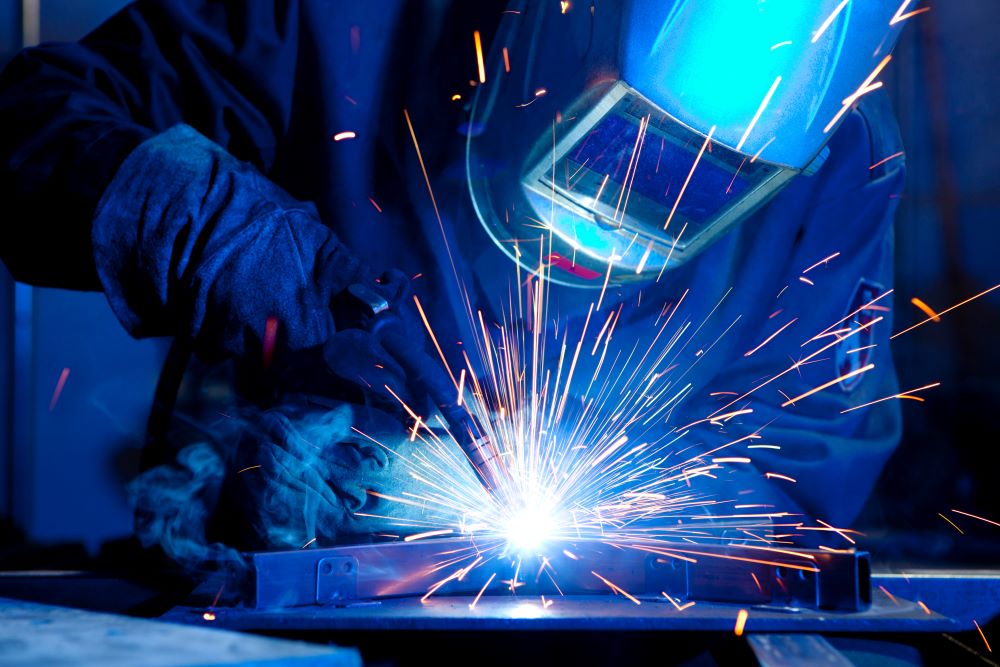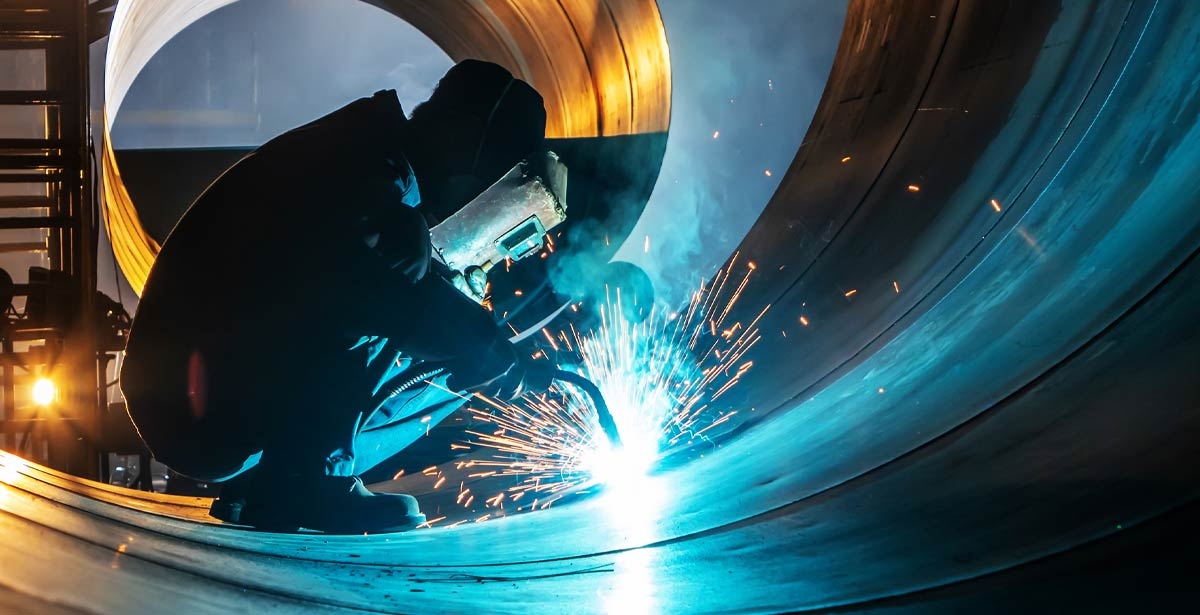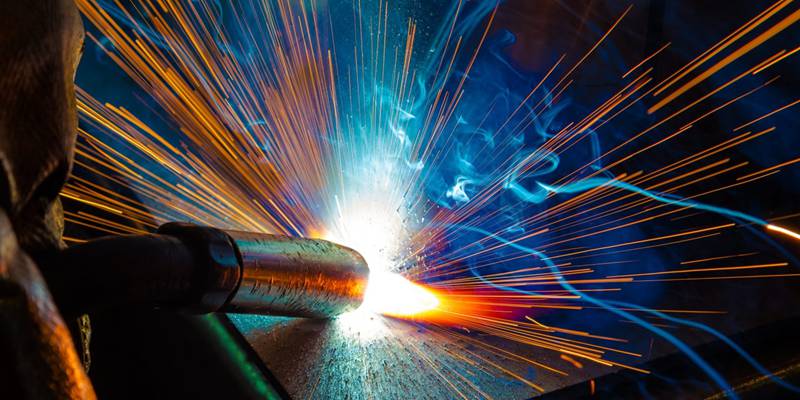Welding WPS Explained: Trick Components and Perks for Your Welding Procedures
Welding WPS Explained: Trick Components and Perks for Your Welding Procedures
Blog Article
The Ultimate Guide to Welding WPS Procedures: A Comprehensive Overview for Welders
In the detailed globe of welding, Welding Treatment Specifications (WPS) serve as the backbone of ensuring quality, uniformity, and safety and security in welding procedures. Comprehending the nuances of producing, applying, and monitoring WPS procedures is vital for welders wanting to elevate their craft and satisfy sector criteria. As we look into the different parts of a WPS and explore the details of certification and accreditation, we will discover the essential function these treatments play in the realm of welding. Let's get started on a journey to unravel the intricacies and importance of WPS procedures in welding practices.
Importance of WPS Procedures
Recognizing the value of Welding Procedure Specs (WPS) procedures is vital for ensuring the top quality and integrity of welded frameworks. WPS treatments function as a roadmap for welders, detailing the required steps, parameters, and products called for to attain an audio weld. By adhering to WPS standards, welders can make sure consistency in their work, causing structurally audio and dependable welds.
One of the main reasons why WPS treatments are essential is their role in maintaining weld top quality and honesty. Complying with the defined welding criteria and methods detailed in the WPS helps protect against flaws such as porosity, breaking, or insufficient combination, which can jeopardize the stamina and resilience of the weld. Additionally, WPS treatments are crucial for making sure compliance with sector standards and codes. By following recognized WPS standards, welders can demonstrate that their job satisfies the needed needs for safety and top quality, supplying assurance to clients, examiners, and governing bodies. Basically, the significance of WPS procedures can not be overstated, as they are basic to accomplishing regular, high-grade welds that fulfill market standards and specs.

Elements of a WPS
A Welding Procedure Specification (WPS) usually comprises crucial elements that information the certain requirements for carrying out a weld, making certain consistency and top quality in the welding procedure. The essential elements of a WPS include important variables such as base steels, filler steels, preheat and interpass temperatures, welding procedures, protecting gases, welding settings, and post-weld heat therapy demands.
Base metals describe the products being joined, while filler metals are made use of to load the void in between the base metals during welding. Preheat and interpass temperatures are essential for controlling the warm input and preventing problems like splitting or distortion. The welding process details the particular technique to be made use of, whether it's gas metal arc welding (GMAW), protected steel arc welding (SMAW), or another technique. Shielding gases protect the weld swimming pool from atmospheric contamination. Welding placements define the alignments in which welding can be executed. Post-weld heat treatment might be needed to ease anxieties and enhance the weld's residential or commercial properties. A complete understanding of these elements is crucial for developing a detailed and efficient WPS.

Qualification and Qualification
Having actually developed the important parts of a Welding Treatment Specification (WPS), the focus now moves in the direction of the important elements of certification and certification in welding practices.

Qualification, on the various other hand, is the formal acknowledgment of a welder's credentials by a relevant qualification body or company. Welding certifications are normally based upon the certain welding processes, materials, and positions a welder is certified to collaborate with. Holding a legitimate welding certification shows that a welder satisfies sector requirements and is skilled to do welding tasks to the required requirements.
Creating a WPS
To develop a Welding Treatment Specification (WPS) that meets market requirements, cautious consideration of welding processes, materials, and operational specifications is necessary. The initial action in developing a WPS is to recognize the welding procedure to be utilized, such as gas steel arc welding (GMAW) or shielded steel arc welding (SMAW)

Applying and Keeping An Eye On WPS
Upon finalizing the thorough Welding Treatment Spec (WPS) that diligently information welding procedures, products, operational criteria, and top quality guarantee steps, the focus changes to properly carrying out and keeping an eye on the well established procedures. Application includes guaranteeing that all welders associated with the job recognize with the WPS and follow it meticulously throughout the welding procedure. This needs providing sufficient training and supervision to guarantee adherence to the specified treatments. Checking the WPS includes continuous oversight to verify that welding activities straighten with the recorded requirements. Assessments, screening, and top quality control procedures are necessary elements of the monitoring procedure to recognize any kind read this of concerns or variances without delay. Regular audits and testimonials of the welding procedures assist in preserving consistency and top quality throughout the task. Reliable application and monitoring of the WPS are crucial for ensuring the integrity, stamina, and safety and security of the bonded joints, eventually contributing to the general success of the welding job.
Conclusion
To conclude, understanding and following Welding Procedure Specs (WPS) is essential for welders to make sure high quality, uniformity, and safety and security in their work. By understanding the components of a WPS, getting appropriate certifications and qualifications, producing in-depth treatments, and applying and monitoring them effectively, welders can improve their abilities and proficiency in welding techniques. Following WPS procedures is essential for producing premium welds and meeting market standards.
In the complex world of welding, Welding Procedure Specifications (WPS) offer as the foundation of ensuring top quality, consistency, and safety in welding procedures. The welding procedure details the certain strategy to be made use of, whether learn this here now it's gas steel arc welding (GMAW), shielded metal arc welding (SMAW), or another approach.To establish a Welding page Procedure Spec (WPS) that fulfills sector requirements, careful consideration of welding processes, materials, and functional criteria is important. The very first action in creating a WPS is to identify the welding process to be made use of, such as gas steel arc welding (GMAW) or shielded metal arc welding (SMAW)Upon finalizing the comprehensive Welding Procedure Spec (WPS) that meticulously information welding processes, products, operational specifications, and quality assurance steps, the emphasis moves to effectively applying and monitoring the well-known treatments.
Report this page